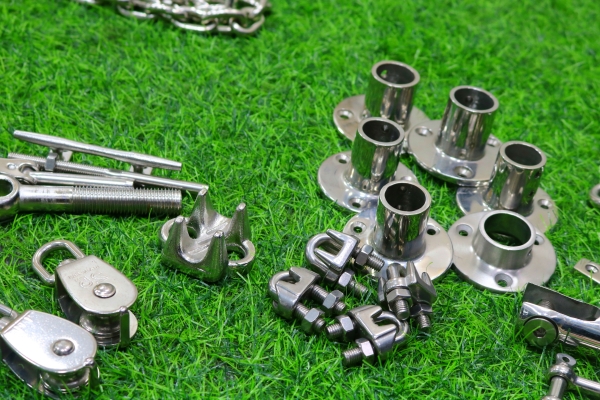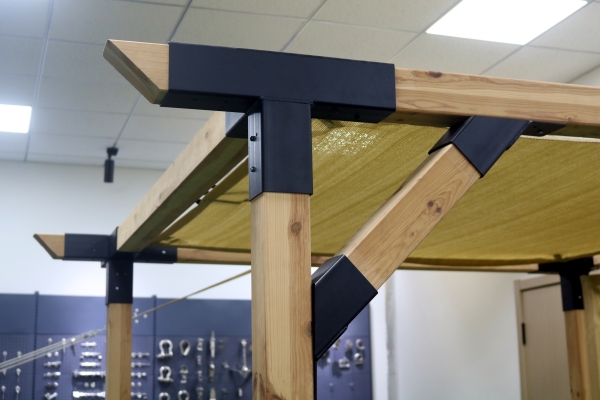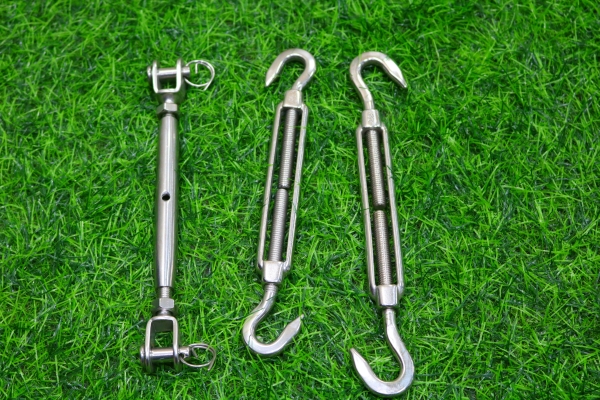Table of Contents
مقاومة التآكل للبراغي المصنوعة من الفولاذ المقاوم للصدأ عند استخدامها مع الألومنيوم
أفضل الممارسات لمنع التآكل الجلفاني عند استخدام براغي الفولاذ المقاوم للصدأ مع الألومنيوم
تعد الصيانة والفحص المنتظم للمواد المثبتة أمرًا مهمًا أيضًا في منع التآكل الجلفاني. يمكن أن يساعد التحقق من وجود علامات التآكل، مثل تغير اللون أو الحفر، في تحديد أي مشكلات في وقت مبكر ومنع المزيد من الضرر. إذا تم اكتشاف التآكل، فمن المهم اتخاذ إجراءات فورية لمعالجة المشكلة. قد يتضمن ذلك استبدال أدوات التثبيت بمادة أكثر توافقًا أو وضع طبقة واقية على سطح الألومنيوم.
في الختام، يمكن أن يكون استخدام براغي الفولاذ المقاوم للصدأ مع الألومنيوم خيارًا قابلاً للتطبيق لتثبيت المواد معًا، ولكن من المهم اتخاذ الاحتياطات اللازمة منع التآكل كلفاني. من خلال اختيار الدرجة والتشطيب المناسبين للفولاذ المقاوم للصدأ، واستخدام مادة مانعة للتسرب متوافقة، واتباع تقنيات التثبيت المناسبة، وإجراء الصيانة والفحص المنتظمين، يمكن تقليل خطر التآكل الجلفاني. يمكن أن يساعد اتباع أفضل الممارسات هذه في ضمان اتصال قوي ومتين بين البراغي المصنوعة من الفولاذ المقاوم للصدأ والألمنيوم.
When it comes to fastening materials together, using stainless steel screws with aluminum can be a common practice. However, this combination can lead to galvanic corrosion if not properly managed. Galvanic corrosion occurs when two dissimilar metals come into contact in the presence of an electrolyte, such as water or saltwater. In this case, the aluminum acts as the anode and the stainless steel as the cathode, leading to accelerated corrosion of the aluminum.
To prevent galvanic corrosion when using stainless steel screws with aluminum, there are several best practices that can be followed. One of the most important factors to consider is the grade of stainless steel being used. Stainless steel is available in various grades, with some being more resistant to corrosion than others. In general, it is recommended to use stainless steel screws with a grade of 316 or higher when fastening aluminum. These grades contain higher levels of chromium and molybdenum, which provide increased corrosion resistance.
Another important consideration is the surface finish of the stainless steel screws. A smooth, polished finish is preferable, as rough or pitted surfaces can create crevices where corrosion can occur. Additionally, it is important to ensure that the stainless steel screws are clean and free of any contaminants before installation. Any dirt or debris on the screws can act as a catalyst for corrosion, so thorough cleaning is essential.
In addition to selecting the appropriate grade and finish of stainless steel screws, it is also important to use a compatible sealing material when fastening aluminum. This can help to create a barrier between the two metals, preventing direct contact and reducing the risk of galvanic corrosion. Silicone or rubber washers can be used to seal the connection and provide added protection against moisture and other corrosive elements.
Proper installation techniques are also crucial when using stainless steel screws with aluminum. It is important to avoid over-tightening the screws, as this can cause stress on the aluminum and lead to cracking or deformation. Using a torque wrench can help to ensure that the screws are tightened to the appropriate level without causing damage to the aluminum. Additionally, it is important to avoid mixing metals in the same assembly whenever possible. Using aluminum rivets or bolts instead of stainless steel screws can help to minimize the risk of galvanic corrosion.

Regular maintenance and inspection of the fastened materials is also important in preventing galvanic corrosion. Checking for signs of corrosion, such as discoloration or pitting, can help to identify any issues early on and prevent further damage. If corrosion is detected, it is important to take immediate action to address the problem. This may involve replacing the fasteners with a more compatible material or applying a protective coating to the aluminum surface.
In conclusion, using stainless steel screws with aluminum can be a viable option for fastening materials together, but it is important to take precautions to prevent galvanic corrosion. By selecting the appropriate grade and finish of stainless steel, using a compatible sealing material, following proper installation techniques, and conducting regular maintenance and inspection, the risk of galvanic corrosion can be minimized. Following these best practices can help to ensure a strong and durable connection between stainless steel screws and aluminum.






